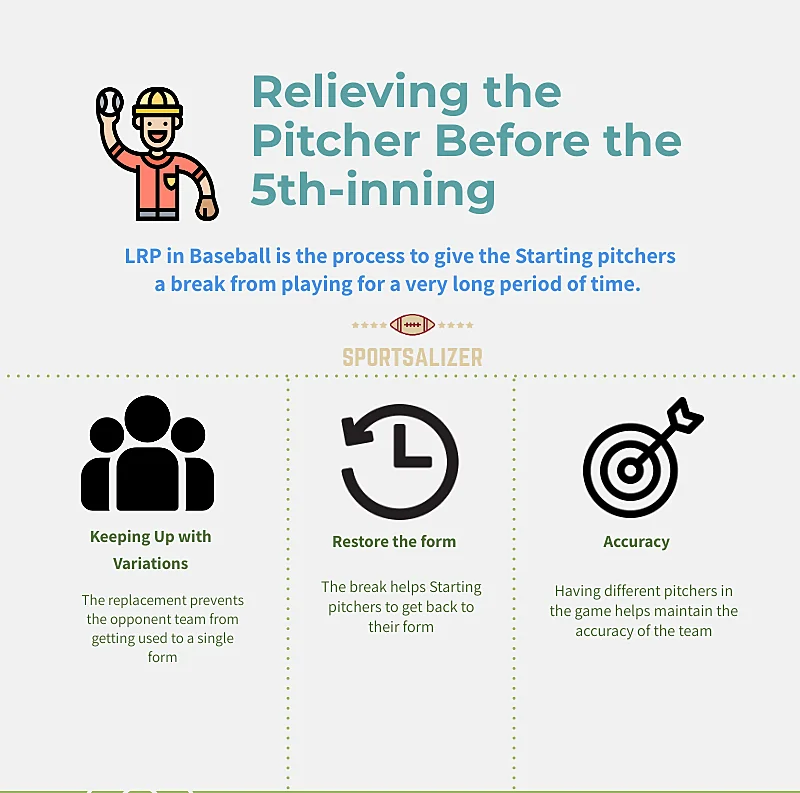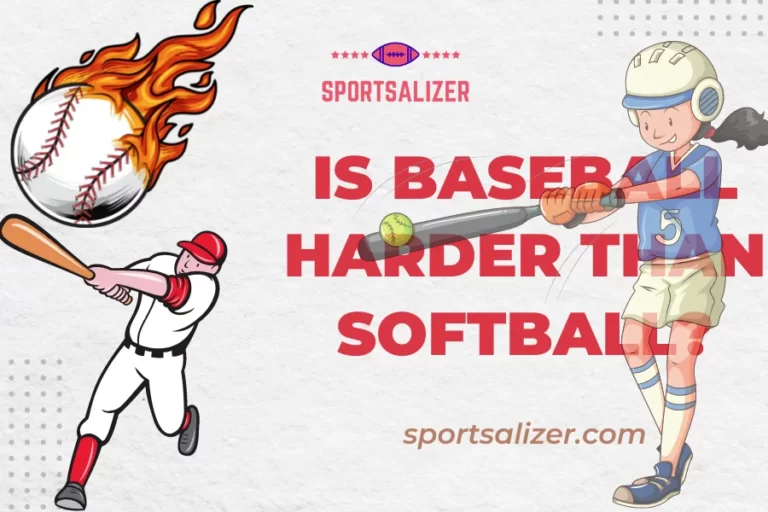LRP in Baseball to Relieve the Pitcher Before the 5th inning

We all get tired, right, by sitting at our desks and finishing our daily chores? Then think about those athletes who are playing on the field. Playing on an average for two or three hours seems pretty exhausting right? That is the reason the LRP in Baseball rule is there. Wondering what that is?? Well, stick along; we shall explain to you everything about it.
Contents
- 1 What is the meaning of “LRP in Baseball?”
- 2 Who all are “relieved” with LRP in baseball?
- 3 The need for LRP in baseball
- 4 Is it possible to use the LRP in baseball before the 5th inning?
- 5 Other types of Relief Pitchers in Baseball
- 6 Is it not worthy to be a LRP in Baseball?
- 7 FAQs on LRP in Baseball
- 8 Trending Now
What is the meaning of “LRP in Baseball?”
Let us start with the acronym. “LRP” in the term stands for “Long Relief Pitcher.” If you have ever noticed a game keenly, or if you are a vivid baseball spectator, then you might have noticed that some pitchers stay in the game from the very beginning. Imagine for a 9-inning game how exhausting it is to stay in the field till the 5th inning. Now you might be wondering the reason to mention “5th inning.”
This LRP in Baseball is used before the fifth inning in a game. The strategy managers use this move to give a bit of “relief” to the pitchers from the start of the game.
Who all are “relieved” with LRP in baseball?
You know there is not just one pitcher for the entire match from a single team. There are multiple. You know there is not just one pitcher for the entire match from a single team. There are multiple pitchers. So who are the ones that are being “Relieved?” As already mentioned, this rule or move is applicable only till the 5th inning, so most of these are pitchers who have thrown in the innings from the starting of the game. LRP in a baseball is those people who are substituted for a “starting pitcher.”
The need for LRP in baseball
If you are aware of the game, you might have seen that a pitcher pitches around six or seven times on average. There are reasons behind this choice. We know that MLB has no such rules that limit the number of times a pitcher can pitch, yet a pitcher is never seen to pitch for the entire game. The reason behind this choice of the strategy managers are two, they are:
- If a pitcher is pitching for the entire game, the opponent team gets adjusted to his style and game-play. This gives them an edge the opponent team can henceforth play so that the game turns in their favor.
- Another reason to use the LRP in Baseball is evident from the term itself. It takes a physical toll to pitch for the entire game of nine innings with the same precision and accuracy. Consequently, it would result in the game taking an ugly turn for his team.
Is it possible to use the LRP in baseball before the 5th inning?
You know, Baseball is a game that even has rules to make sure every team gets a “fair chance.” Just like there are always exceptions to rules, so is this case. Under specific circumstances, it is possible to use LRP in Baseball before the fifth inning.
- If during a game before the fifth inning itself, a team is seen to play pretty badly where they have already given up two runs in the very early innings, then it can be called a unique situation. But this can only be exercised with a pitcher who had not already given up runs during the first three or four innings. This is a pretty obvious fact to be stated since bringing an already injured horse to the battlefield again would only result in more losses. Also, if this rule is not followed for using an LRP in Baseball, the team becomes ineligible to use them later in the game.
- One must note that this exceptional situation is only applicable when a team is already one and a half innings or two and a half innings into the game. A replacement made in the middle of an inning has some conditions. It is mandatory for an LRP to at least one pitch when they are being substituted in a half-inning.
Other types of Relief Pitchers in Baseball

Middle Relief Pitcher
Ther is another type of pitcher apart from LRP in Baseball. They are called “MRP,” which stands for “Middle Relief Pitcher.” As the term suggests, these pitchers are used in the middle of the game during the sixth or seventh inning.
In a typical game, we can see these MRPs throws for approximately two innings, if not less. Although, the number of innings an MRP throws for is ultimately decided by how good is he playing and especially who is next upcoming in the batting order from the opponent team.
Must Read | Unknown Facts About the Rickey Henderson Baseball Card
Set-Up Pitcher
This is the pitcher introduced to the game in the eighth inning of the game. He typically plays for only one inning, which is evident as he enters the eighth inning. A “SU Pitcher,” the acronym for a Set-Up Pitcher, generally gets replaced by the Closer as the game approaches the end.
Is it not worthy to be a LRP in Baseball?
You might have this question, given the fact that they might seem like a replacement. But that is not true. Let us get this straight getting selected as the starting pitcher requires a lot of qualification. As it requires playing for the longest time, it needs physical strength. But at the same time, the emotional strength to be able to play the game for such a long time with the same precision and overlook the exhaustion from the game.
The starting pitcher is like the backbone of the game. It is like the entire team relies on him and expects him to give away a lot of runs. Here comes the LRP in Baseball. They relieve these starting pitchers for some time before getting back in the game with full vigor.
So getting to replace the one on whose shoulder almost the entire team’s fate depends, we believe it is something one should be proud of.
There are statistics based on the MLB player Pitching. If you want to learn about each player individually, you can visit the official website for MLB.
FAQs on LRP in Baseball
What are the other acronyms used for LRP in Baseball?
Apart from LRP, however, there are other acronyms for the Long relief Pitcher. LR and LoR both mean the same thing, but in due course of time, the frequent usage of the term has resulted in the formation of newer acronyms.
Can a pitcher pitch all nine innings?
Well, the answer is, unfortunately, “No.” The reason is that a pitcher is not superhuman. So it is not possible to throw in all nine innings with the same accuracy. Pitching for the entire game would decrease performance and ultimately a bad outcome for the team he is pitching for.










